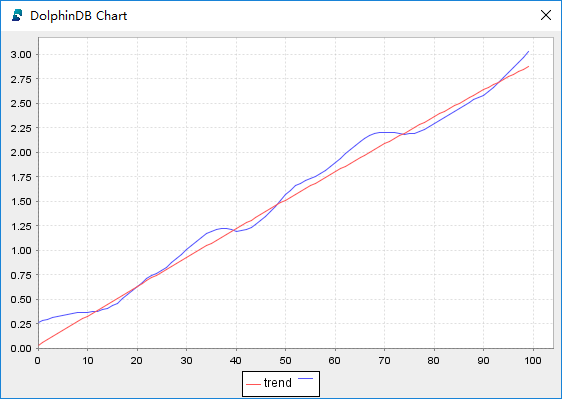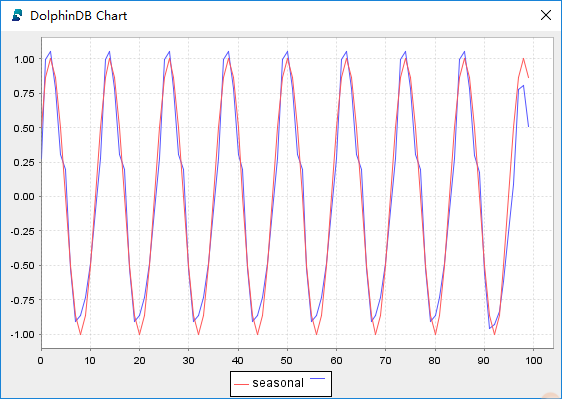stl
Syntax
stl(data, period, sWindow, [sDegree], [sJump], [tWindow], [tDegree], [tJump], [lWindow], [lDegree], [lJump], [robust], [inner], [outer])
Details
data is a numeric vector.
period is an integer larger than 1 indicating the length of a time-series cycle.
sWindow is either the string “periodic” that means smoothing is effectively replaced by taking the mean, or an odd number no smaller than 7 indicating the span (in lags) of the loess window for seasonal extraction.
sDegree can be 0, 1 or 2 indicating the degree of locally-fitted polynomial in seasonal extraction. The default value is 1.
sJump is an integer greater than 1 indicating the number of elements to skip for the smoother in seasonal extraction. The default value is ceil(sWindow/10).
tWindow is a positive odd number indicating the span (in lags) of the loess window for trend extraction. The default value is the next odd number after 1.5 * period / (1 - (1.5 / sWindow)).
tDegree can be 0, 1 or 2 indicating the degree of locally-fitted polynomial in trend extraction. The default value is 1.
tJump is an integer greater than 1 indicating the number of elements to skip for the smoother in trend extraction. The default value is ceil(sWindow/10).
lWindow is a positive odd number indicating the the span (in lags) of the loess window of the low-pass filter used for each subseries. The default value is the next odd number after period.
lDegree can be 0, 1 or 2 indicating the degree of locally-fitted polynomial for the subseries low-pass filter. The default value is 1.
lJump is an integer greater than 1 indicating the number of elements to skip for the smoother in the subseries low-pass filter. The default value is ceil(sWindow/10).
robust is a Boolean value indicating if robust fitting is used in the loess procedure. The default value is false.
inner is a positive integer indicating the number of ‘inner’ (backfitting) iterations; usually very few (2) iterations suffice. If robust=true, the default value of inner is 1; if robust=false, the default value of outer is 2.
outer is a positive integer indicating the number of ‘outer’ robustness iterations. If robust=true, the default value of outer is 15; if robust=false, the default value of outer is 0.
Details
Use Loess method to decompose a time series into trend, seasonality and randomness. The result is a dictionary with the following keys: trend, seasonal, and residual. Each key corresponds to a vector with the same length as data.
Examples
$ n = 100
$ trend = 6 * sin(1..n \ 200)
$ seasonal = sin(pi / 6 * 1..n)
$ residual = rand(1.0, n) - 0.5
$ data = trend + seasonal + residual
$ res = stl(data, 12, "periodic");
$ plot([trend, res.trend]);

$ plot([seasonal, res.seasonal]);
